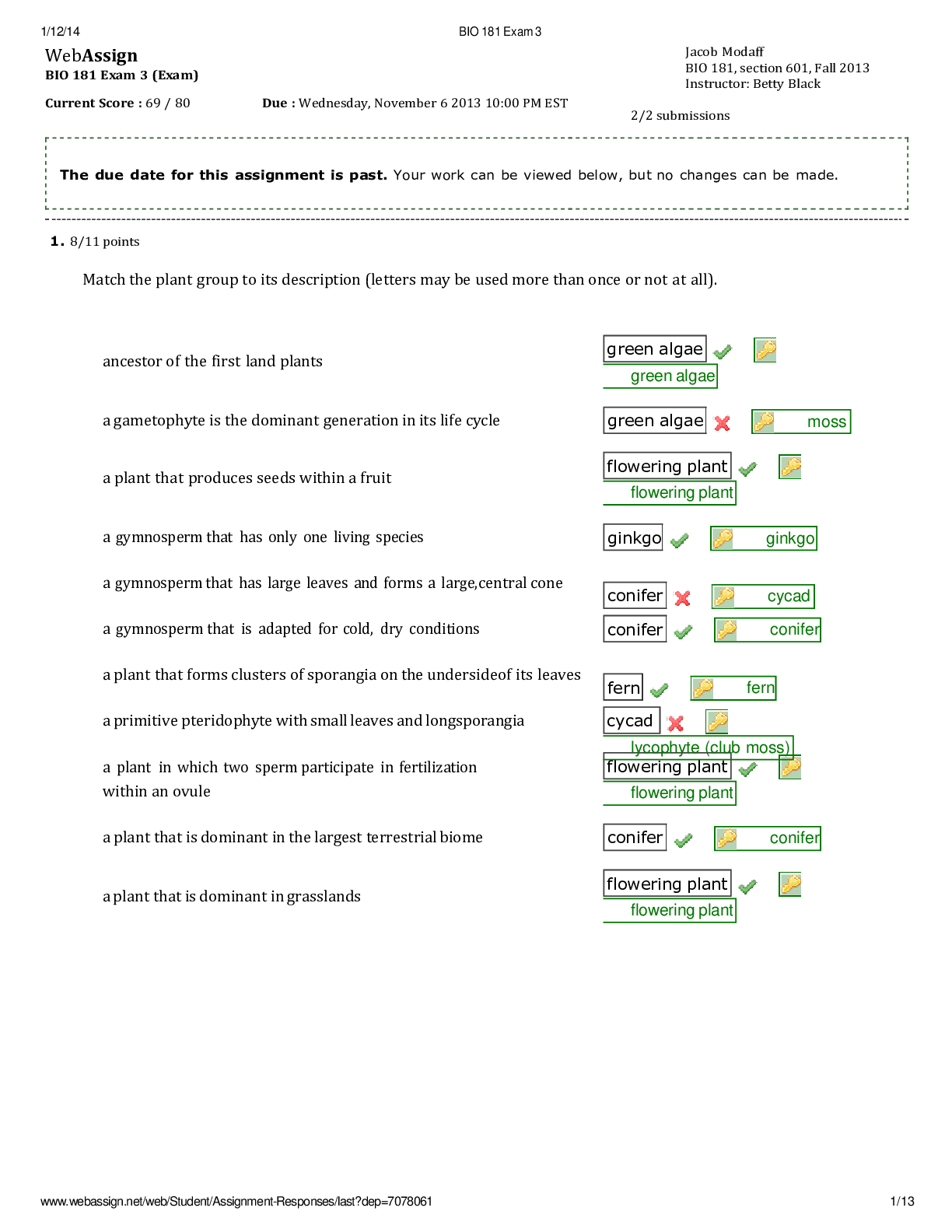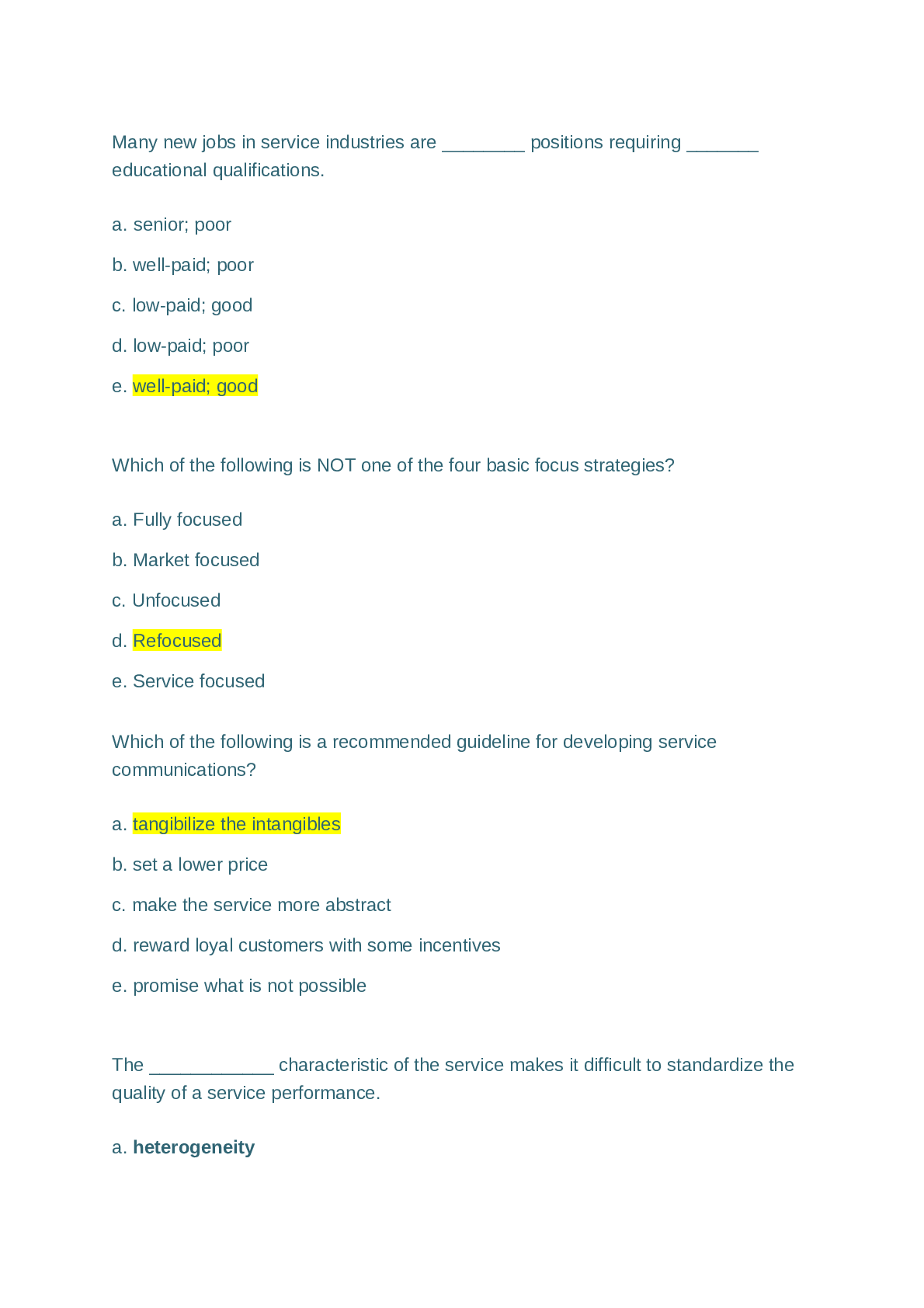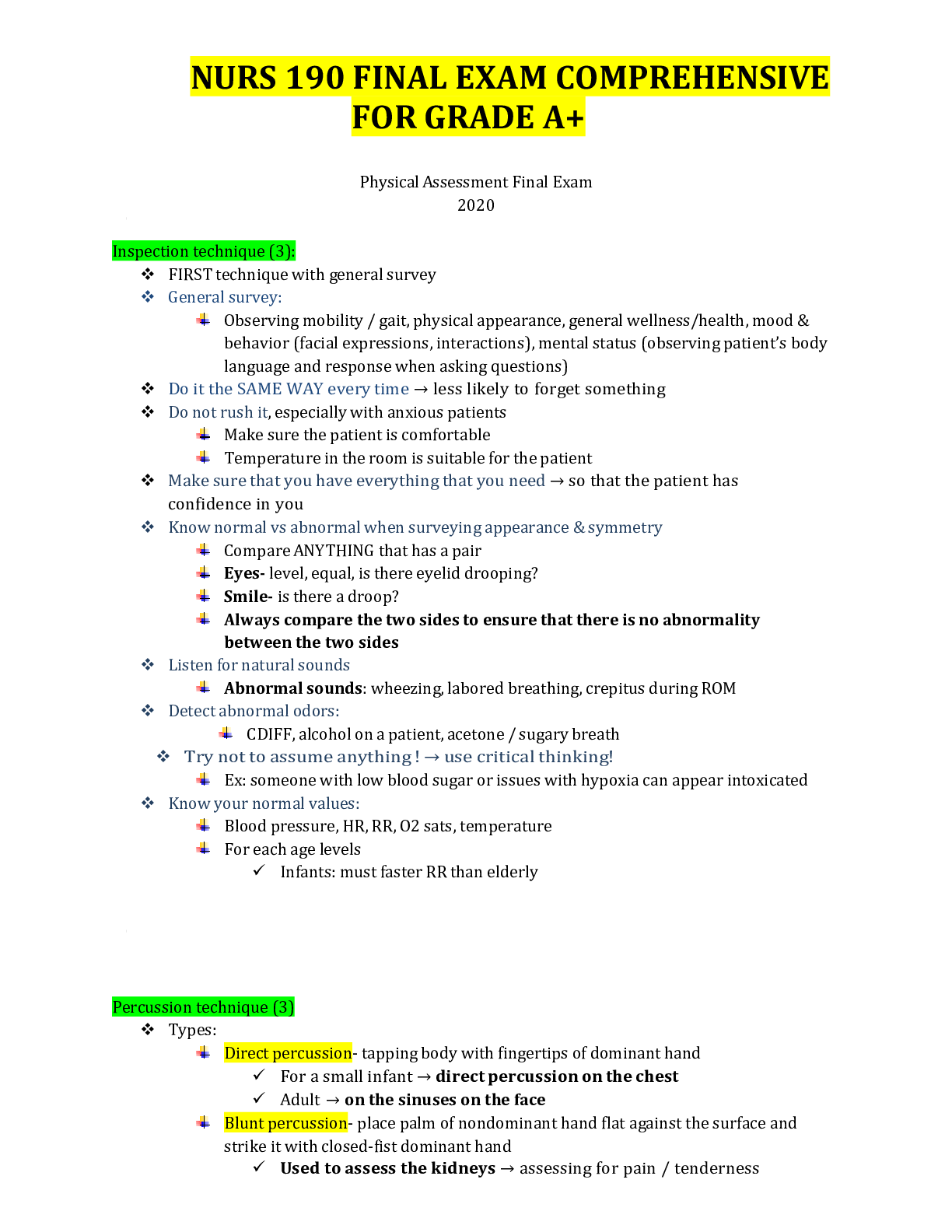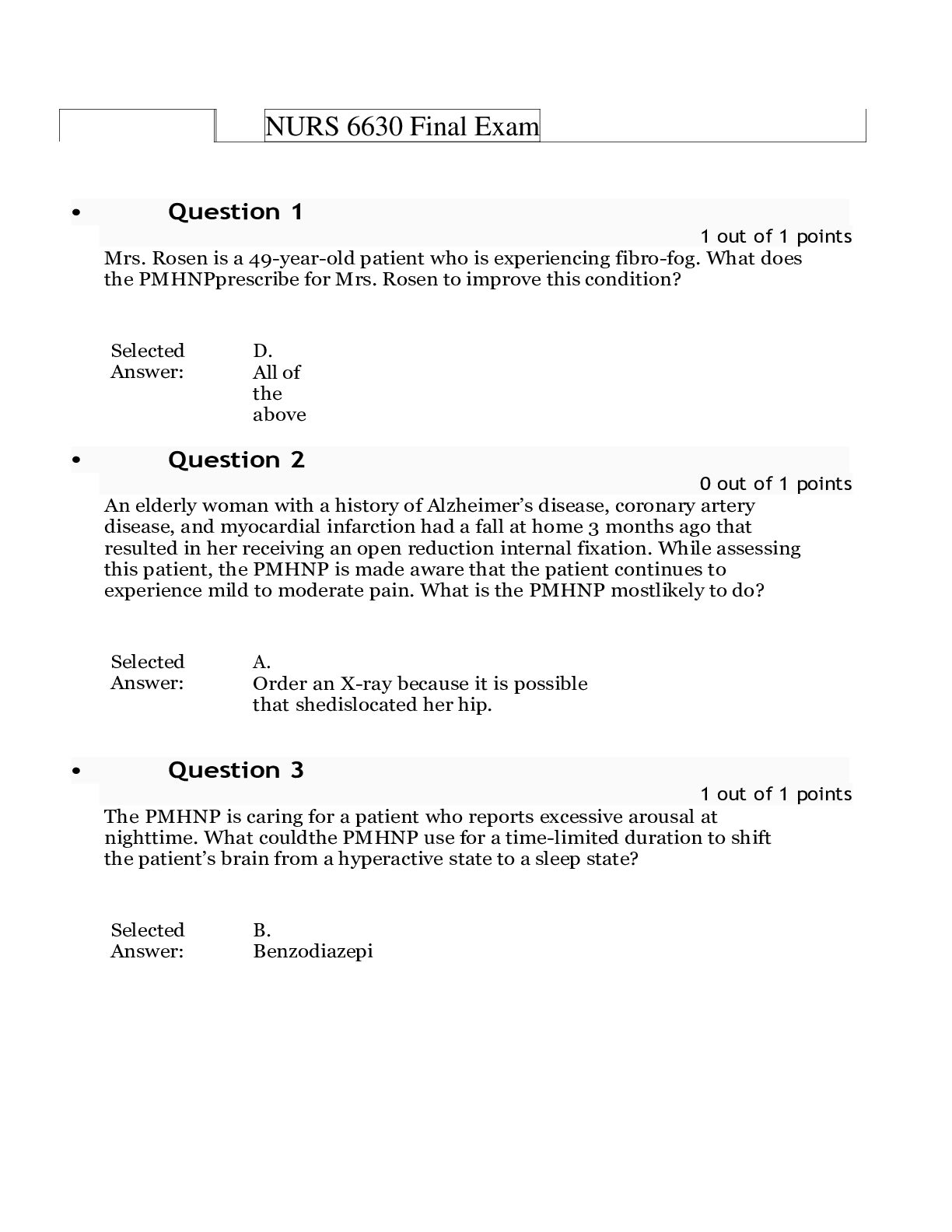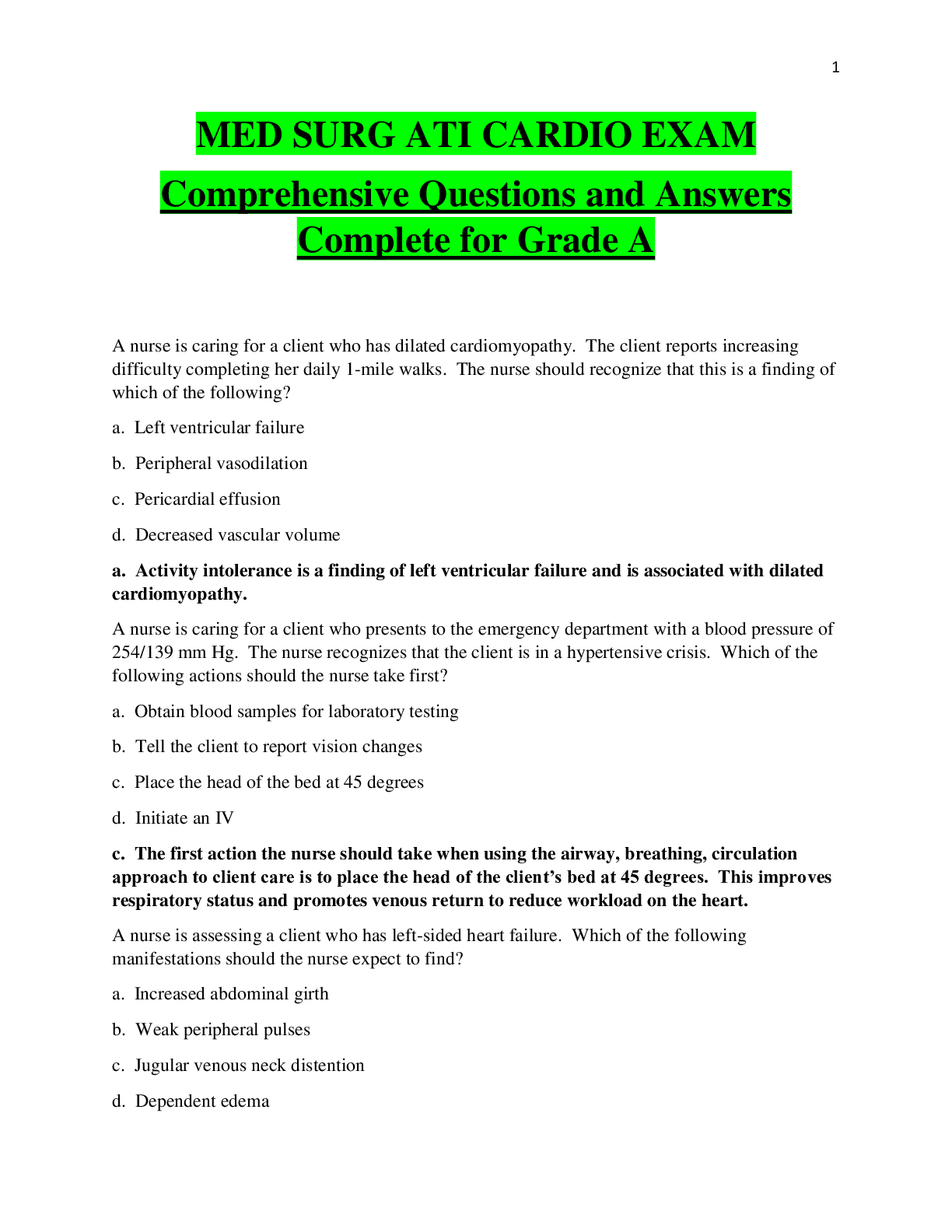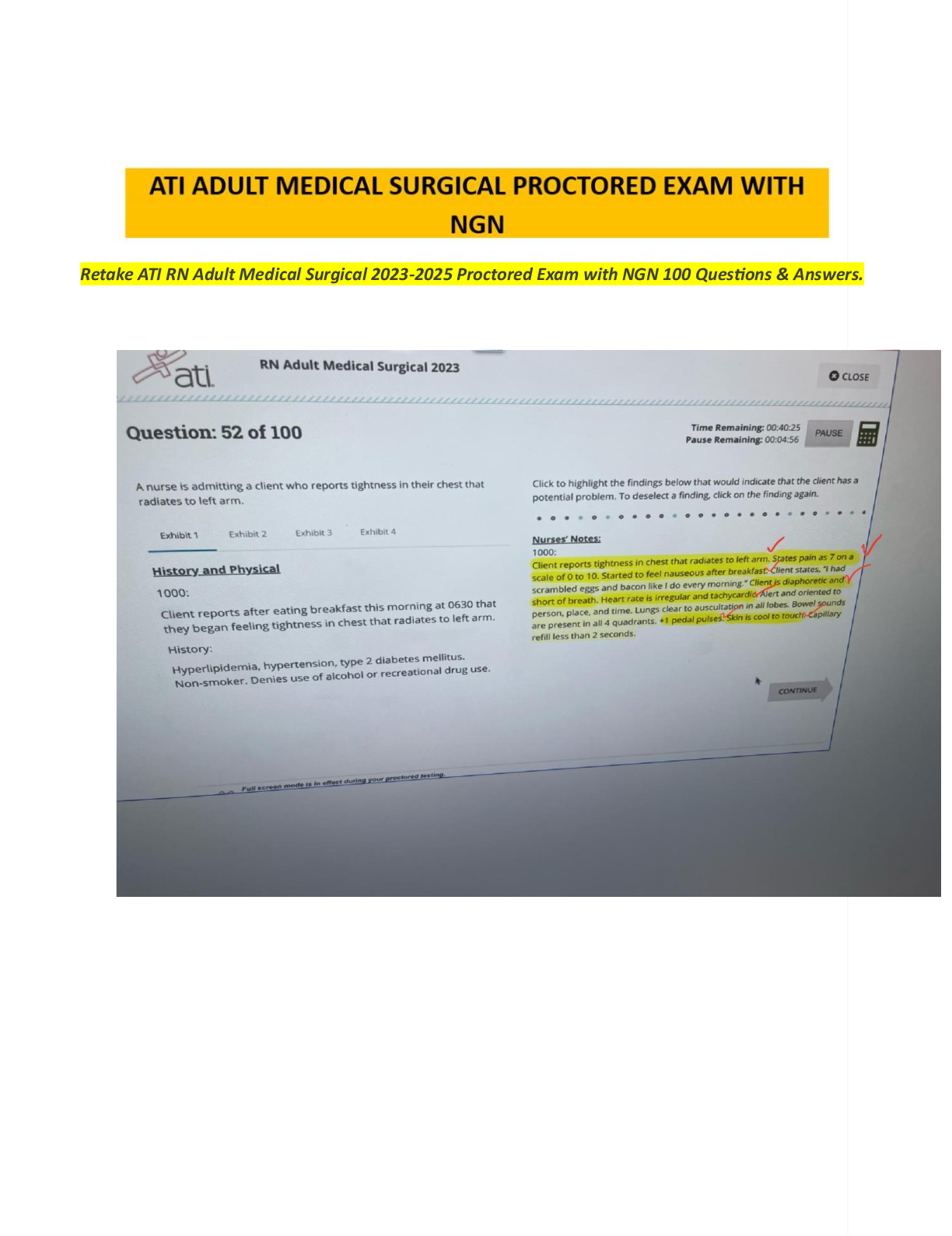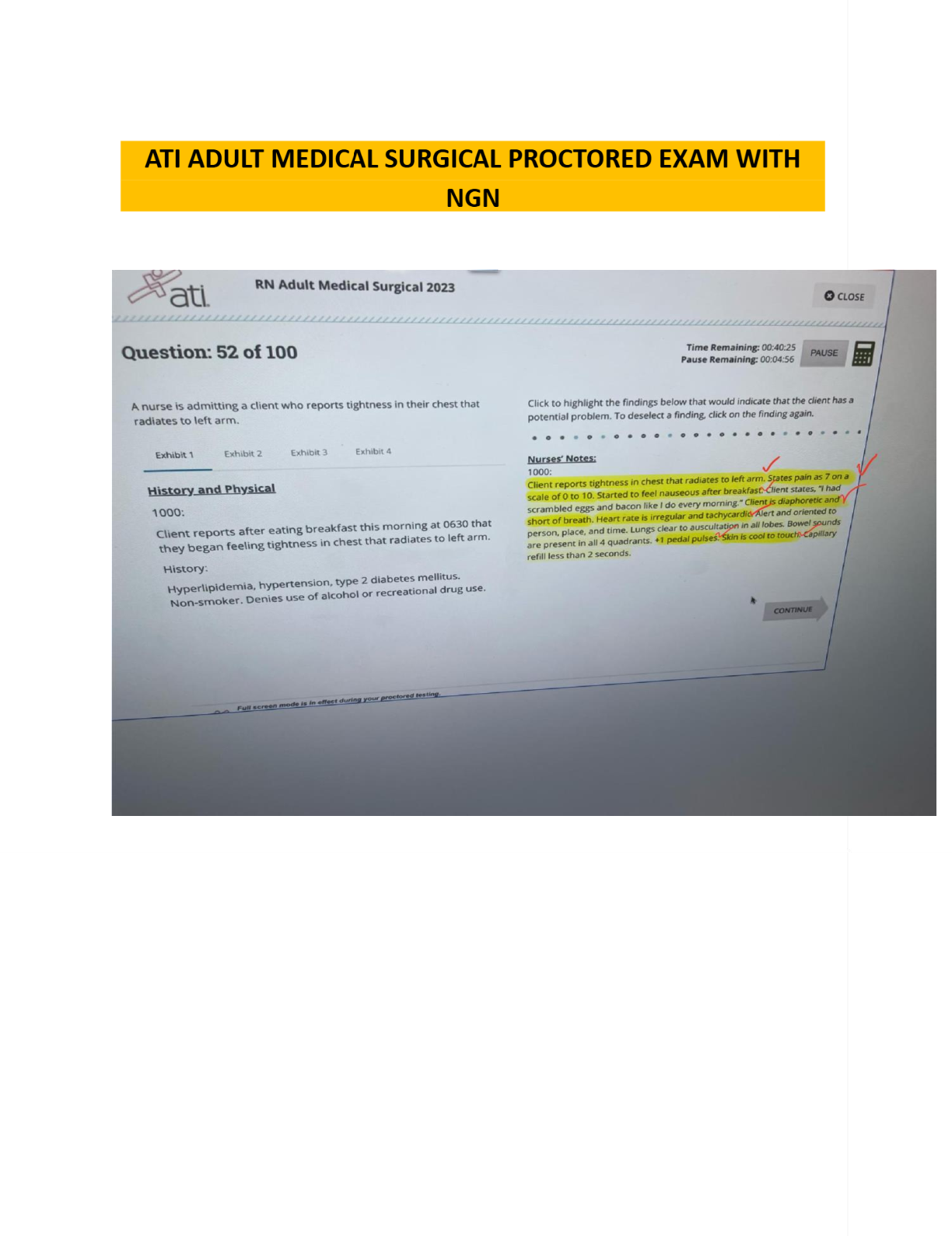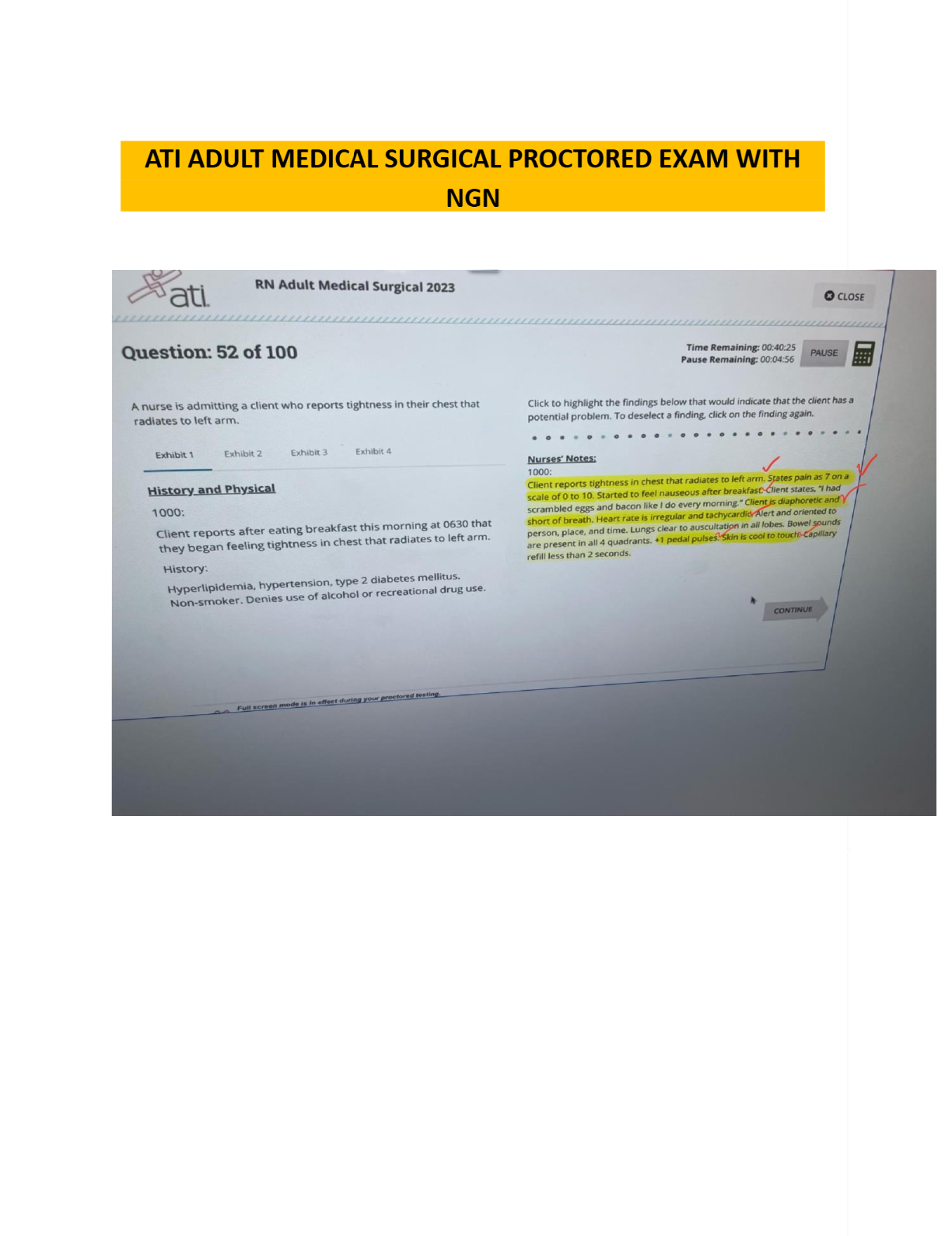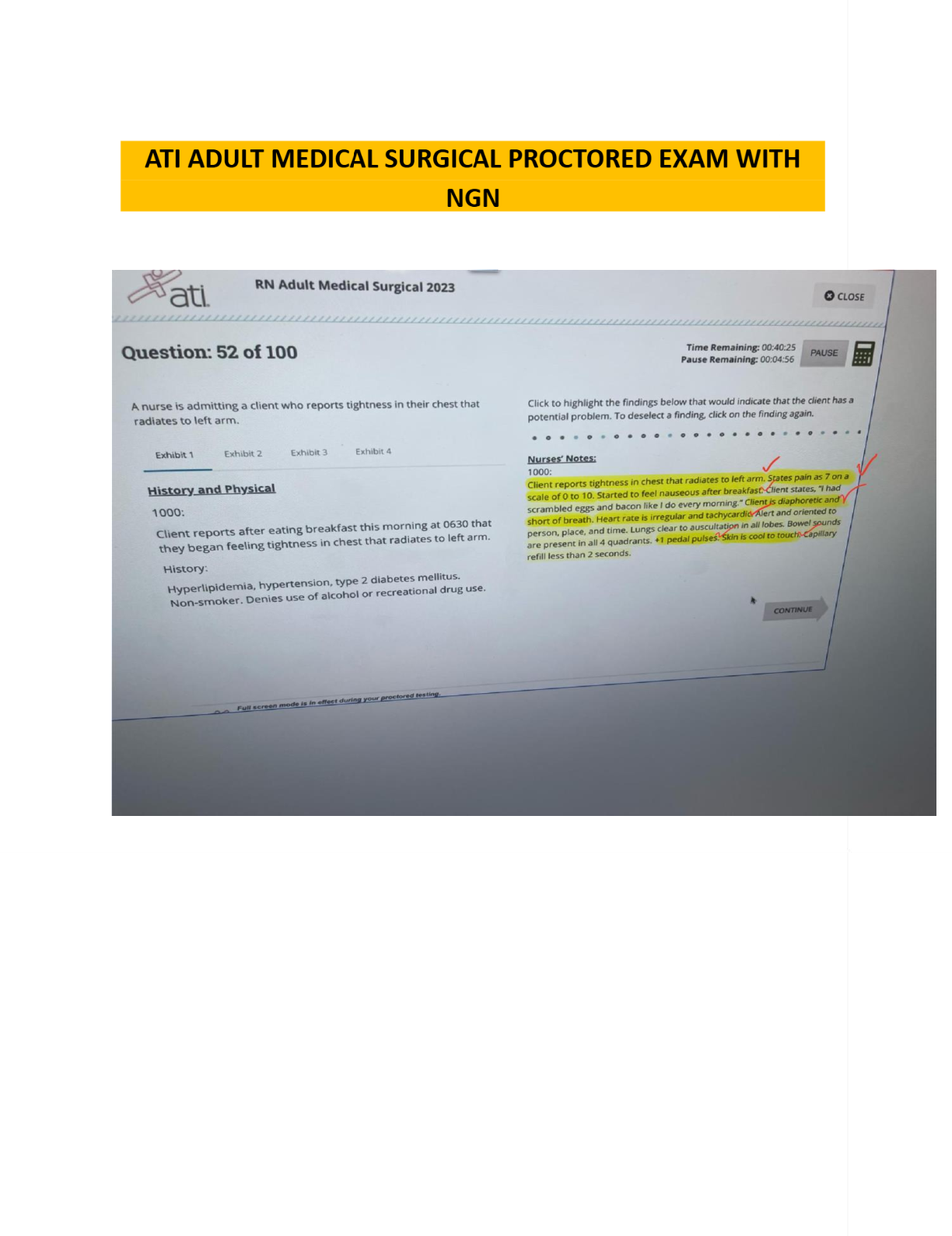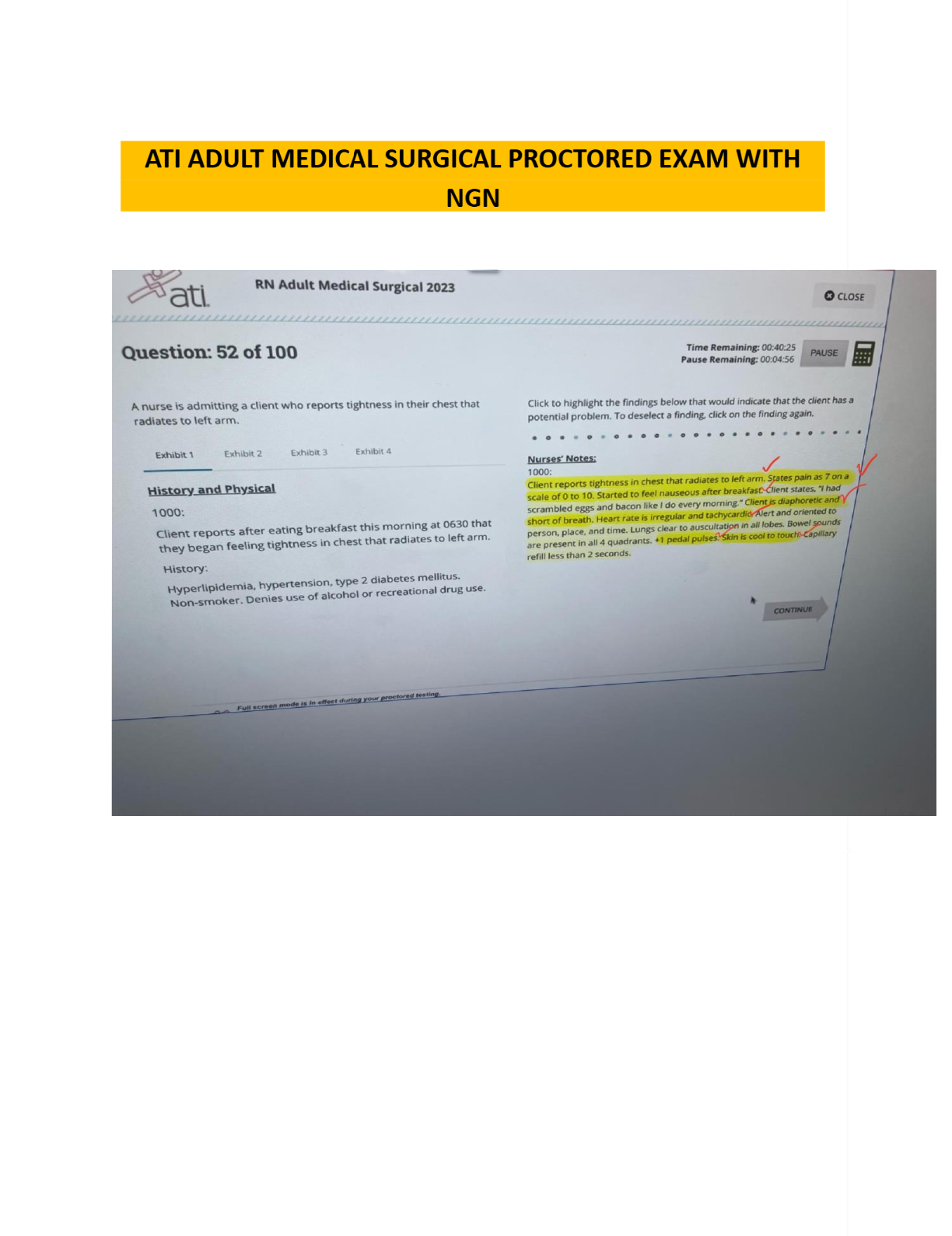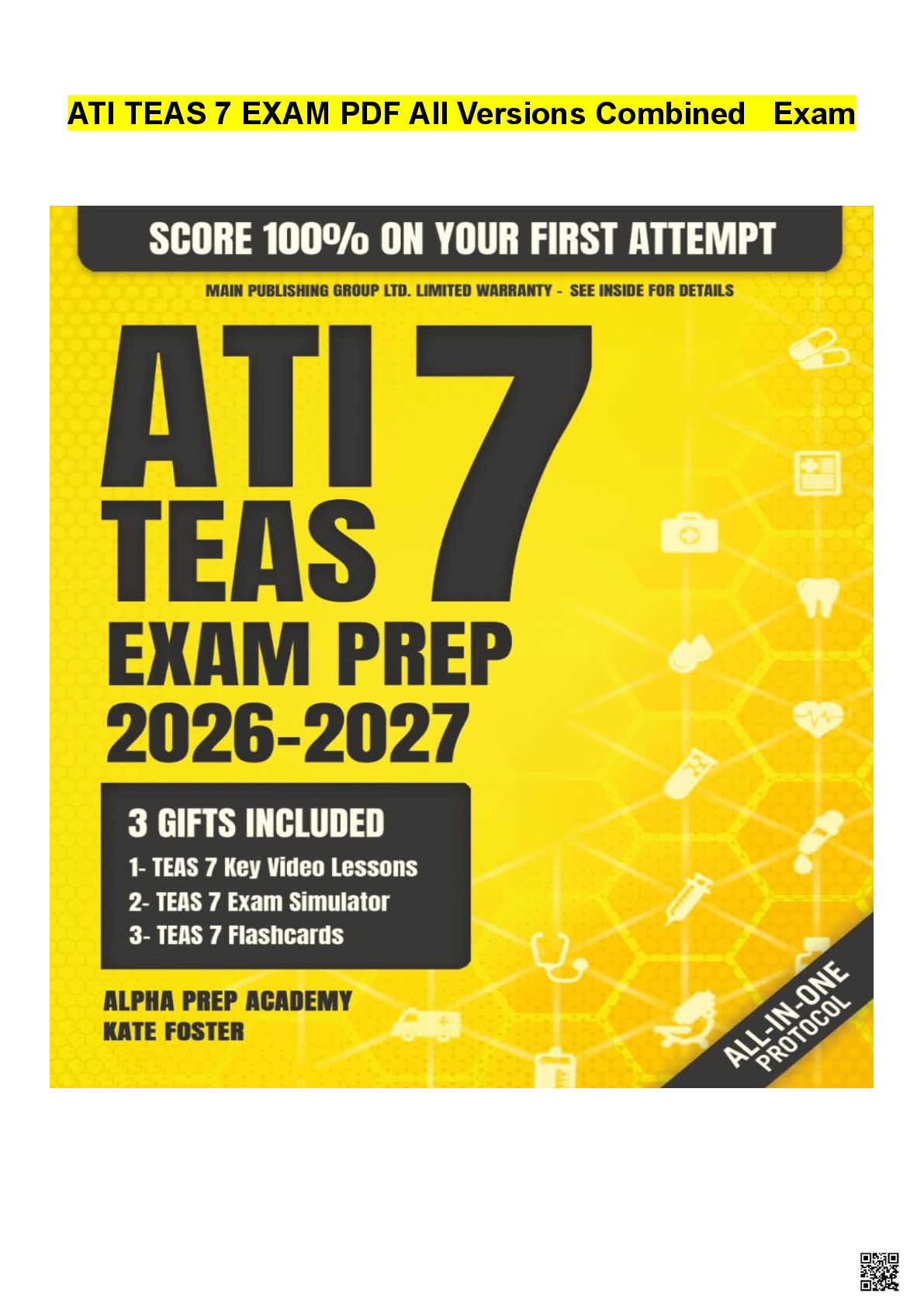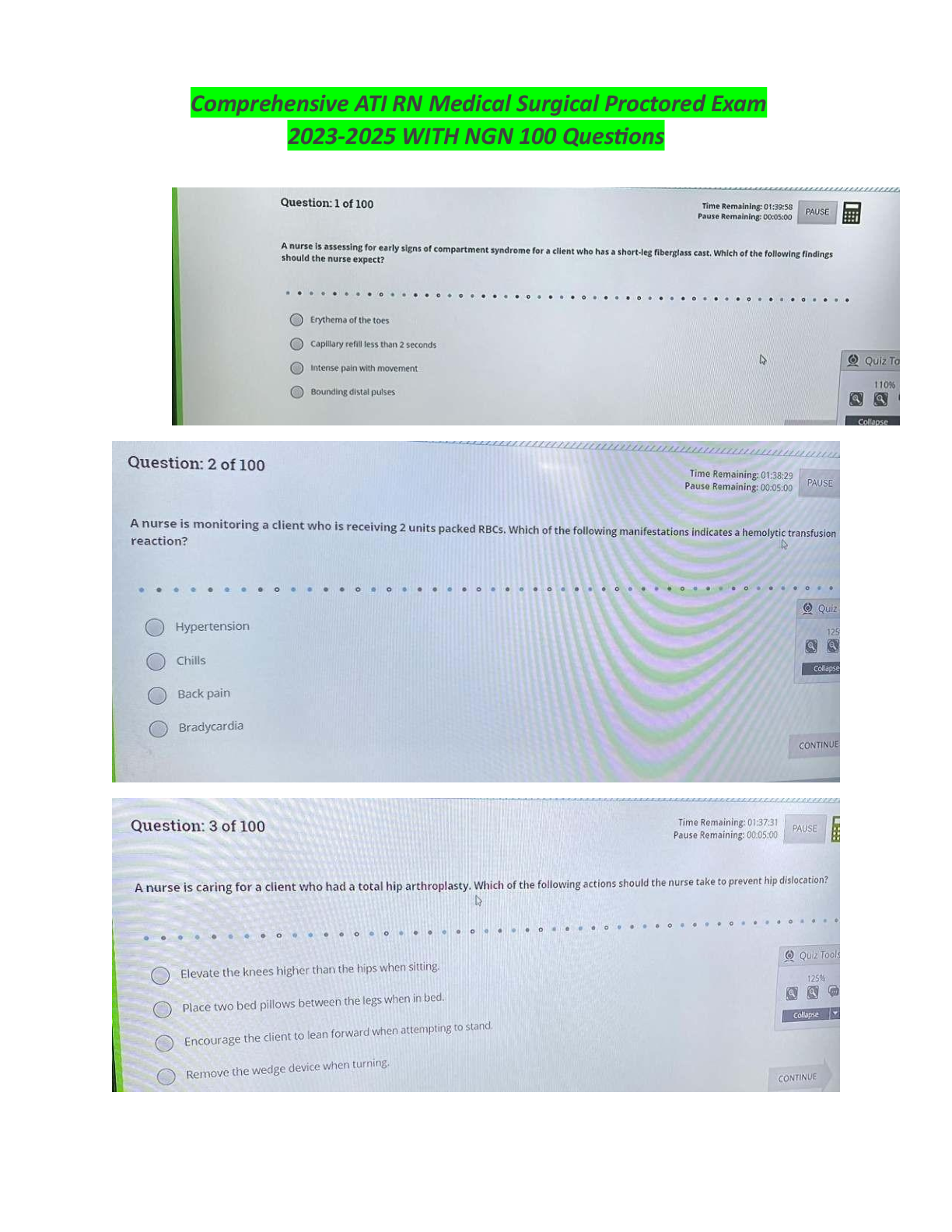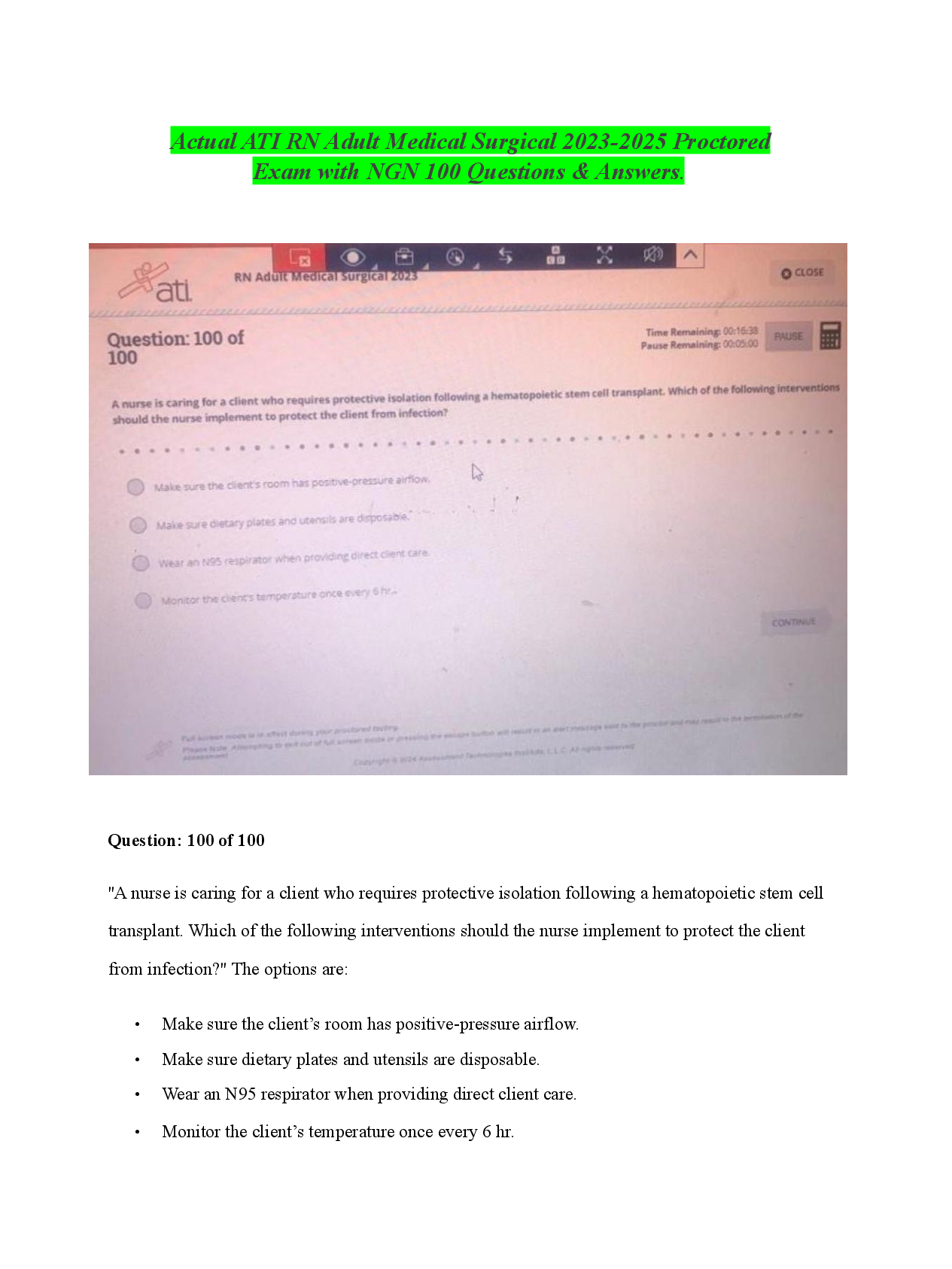WebAssign BIO 181 Exam 3 (Exam) Current Score : 69 / 80
Document Content and Description Below
WebAssign
BIO 181 Exam 3 (Exam)
Current Score : 69 / 80 Due : Wednesday, November 6 2013 10:00 PM EST
1. 8/11 points
Jacob Modaff
BIO 181, section 601, Fall 2013 Instructor: Betty
...
Black
2/2 submissions
Match the plant group to its description (letters may be used more than once or not at all).
ancestor of the first land plants
a gametophyte is the dominant generation in its life cycle
a plant that produces seeds within a fruit
a gymnosperm that has only one living species
a gymnosperm that has large leaves and forms a large, central cone
a gymnosperm that is adapted for cold, dry conditions
a plant that forms clusters of sporangia on the underside of its leaves
a primitive pteridophyte with small leaves and long sporangia
a plant in which two sperm participate in fertilization within an ovule
a plant that is dominant in the largest terrestrial biome
a plant that is dominant in grasslands
2. 8/9 points
Match the organism to its description (one letter is not used).
an ectoparasite that lives on human clothing
an ectoparasite that carries Lyme disease
an ectoparasite that carries yellow fever
an ectoparasite that lives in human pubic hair
an ectoparasite of plants
a parasite that lives within red blood cells
a parasite that lives in the intestine
a parasite that causes African sleeping sickness
an ectoparasite that serves as intermediate host
for dog and cat tapeworms
3. 2/2 points
The ozone layer is located
4. 2/2 points
If global warming continues, which of the following are expected to occur?
5. 2/2 points
What is the role of endosperm in seed plants?
6. 0/2 points
Which of the following is true of density-independent growth of a population?
7. 2/2 points
The most common way in which members of a population are dispersed within a given area is
8. 2/2 points
In the growth curve below (for a population of paramec ia), what causes the plateau?
9. 2/2 points
Regarding the human population, what is an ecological footprint?
10.0/2 points
The graph of age structure below depicts a human population that is
11.2/2 points
Two organisms are striving to use a resource that is in short supply. This type of interaction is termed
12.0/2 points
Which of the following is an example of two species that both benefit from their association?
13.2/2 points
This graph illustrates
14.2/2 points
Species richness within a community refers to
15.2/2 points
Which of the following is true of secondary succession?
16.2/2 points
Which of the following is true of introduced species?
17.4/4 points
Explain the location of estuaries and the type(s) of harm the humans have done to this biome.
Estuaries are found when a river runs into ocean or sea water and the two mix where they meet. Humans have polluted the water itself with toxins from industrial waste and farming as well as wearing down the soil present and destroying some of the land, so there is less area for the land animals or amphibians to rest.
Score: 04 out of 4 Comment:
Graded: 04 points by Black, Betty on Thursday, November 7 2013 09:35 PM EST.
18.4/4 points
Regarding K-selected and R-selected species:
a) compare their growth curves
b) name an animal that has each type of growth curve
A) A K-selected species is density dependent and will have a logistic curve where growth is rapid until it reaches the carrying capacity of the environment where it will remain fairly stable at that point. An R-selected species is density independent and will experience rapid growth whenever there are resources available for the population to grow, such as food, water, and space. If the resources are present, the population will grow rapidly until they use up the resources and end up above the carrying capacity, then the population will decline until it's below the carrying capacity again. The growth curve fluctuates above and below the carrying capacity mark as resources appear and are used up.
b) Rats would be an r-selected species, along with bacteria. K-selected species would be humans and dogs.
Score: 4 out of 4 Comment:
Graded: 4 points by Wingate, Marvin on Thursday, November 7 2013 09:50 AM EST.
19.4/4 points
Define the terms "competitive exclusion" and "ecological niche", then indicate how they are related (give a specific example of the relationship to receive full credit).
Competitive exclusion is where one species is not strong enough to compete for a certain limited resource so it must find another way to get it or learn to use another resource. An ecological niche is the small area or resources or characteristic that is used or taken on by a species. An example could be clownfish living in sea anemone, that is there niche, as they are immune to the anemone's sting. Competitive exclusion can create more ecological niches as certain species may be forced to find new areas or resources to use. This could be seen in a forest with an extremely thick to player where sunlight is almost completely blocked from reaching the ground. The plants at the ground level would normally need lots of sunlight, but since they are blocked from getting it they adapt and certain species can be found that don't require as muc h sunlight as others.
Score: 4 out of 4 Comment:
Graded: 4 points by Crow, Tess on Wednesday, November 6 2013 05:39 PM EST.
20.4/4 points
Relative to trophic levels in a community:
a) explain what is meant by the term "food web" and why some organisms may be placed at more than one trophic level within a food web
b) give a specific example of such interactions within a food web
a) A food web is the relationship between all of the organisms in a community that is defined by who consumed who or what. The animal at the start of the food web is the largest predator and consumes the everything that is below it in the food web, and those animals consume all of the organisms that are below them in the food web and so on until you reach the plants and algae and the bottom. each of those levels is a trophic level. Some organisms can be at more than one level because they may consume a huge variety of other organisms and could be placed at the secondary, tertiary, or quaternary consumer levels. The choice is up to the person who makes the food web and which relationship they find the most important, or they could be put at all the levels at once.
b) An animal that could be placed at many levels is a vulture. The vulture does not discriminate its prey by any measure except that its dead or severely injured. This means that they could eat a cow or gazelle and become secondary consumers, or they could eat a lion or a tiger and become tertiary consumers. Either place in the food web would be an accurate placing for them.
Score: 4 out of 4 Comment:
Graded: 4 points by Grabow TA, Hannah on Wednesday, November 6 2013 01:31 PM EST.
21.3/4 points
Regarding community structure, give an example of an intermediate disturbance and explain the intermediate-distrubanc e hypothesis.
Intermediate disturbances are a medium level disturbance with average frequency. That is to say these disturbances are not so severe they wipe out huge portions of the community, but they are severe enough to cause an effect within. And they are frequent enough to keep up the diversity within the community, but not so frequent that diversity cannot be maintained. The intermediate- disturbance hypothesis says that species richness will reach it's maximum when those conditions are met and the disturbances are medium strength and do not occur too often or too infrequent.
Score: 3 out of 4
Comment: An example of an intermediate disturbance is necessary for full credit
Graded: 3 points by Anderson TA, Monica on Wednesday, November 6 2013 08:17 PM EST.
22.12/12 points
There are a variety of interactions among species within a community.
a) Give a specific example for each of the following species relationships. (You must describe each relationship in detail to receive full credit):
a predator-prey relationship involving camouflage a mutualistic relationship involving green algae
a commensal relationship involving animals
b) Indicate how a commensal relationship differs from a parasitic relationship.
a) A predator-prey relationship would be the snake and the chameleon. The snake is the predator in this case and will hunt and eat the chameleon if they're in the same community. The chameleon tries to avoid this by changing it's skin color in order to blend in with the surroundings, and that is known as camouflage. If the camouflage of the chameleon is successful, the chameleon will live on, but if the chameleon is too late or not well-disguised enough then the snake will get its meal.
A mutualistic relationship is the one between green algae and coral where they both benefit. When green algae become attached to the coral they get a free place to live, and a solid area to reproduce and flourish. When the coral allows a green algae to attach to it, they can feed of the sugars that the green algae produces with its metabolism and live for muc h longer without hunting. Both the species benefit within this relationship, so it is mutualistic .
A commensal relationship would involve the cattle and the cattle egret. The cattle is completely unaffected in this relationship, but the cattle egret benefits from the cattle stirring up the grass and revealing numerous insects that the egret feeds off of and this allows the egret to live with no expense to the cattle. That is a commensal relationship.
b) A commensal relationship is different from a parasitic relationship in that no one is hurt or loses from this relationship. In both relationships, only one species is benefiting, but in a commensal relationship, the other species does not benefit or get hurt. Nothing really happens to the other species as a result of that relationship.
Score: 12 out of 12 Comment:
Graded: 12 points by Wingate, Marvin on Wednesday, November 6 2013 11:37 AM EST.
[Show More]
Last updated: 3 years ago
Preview 1 out of 13 pages


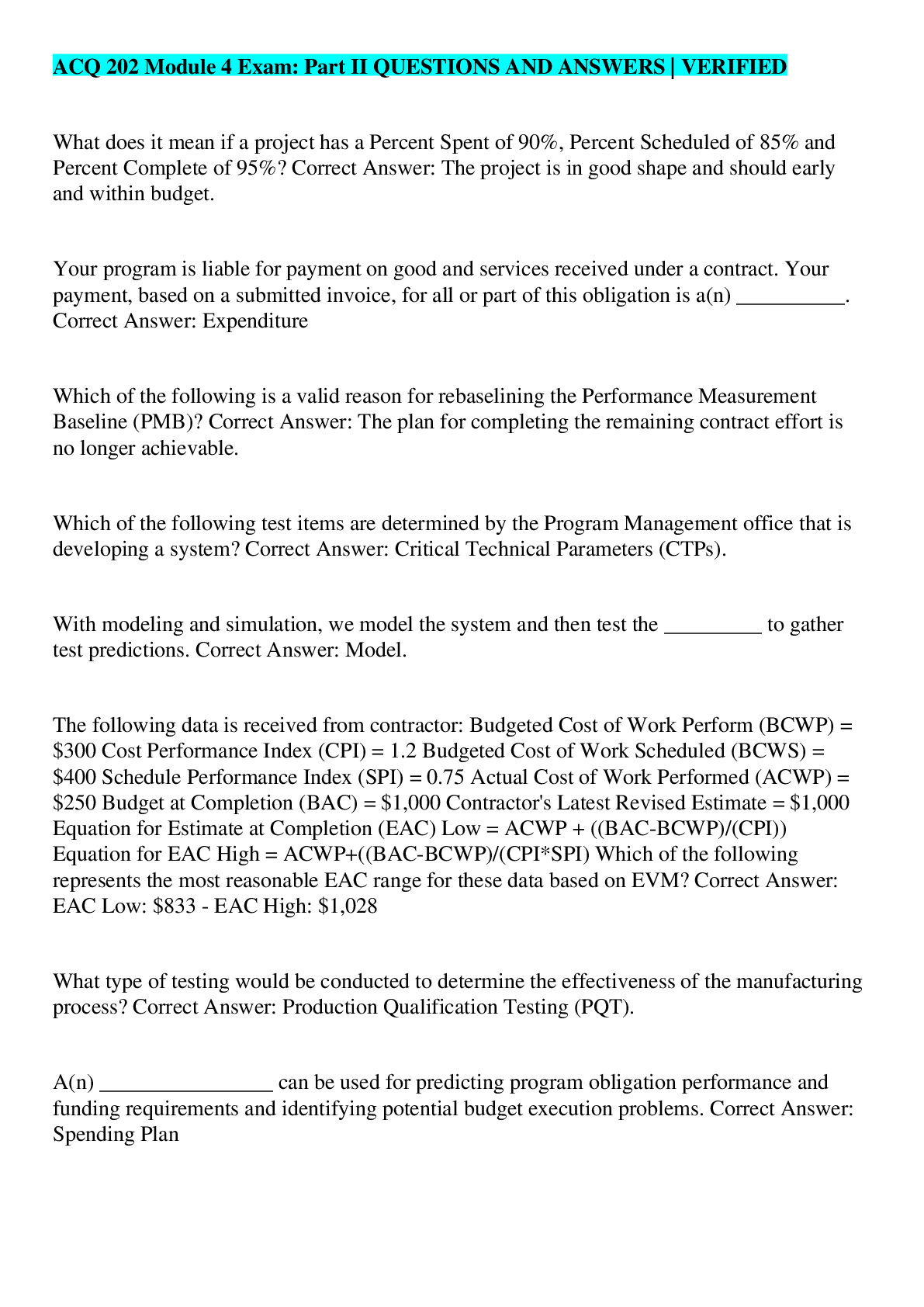

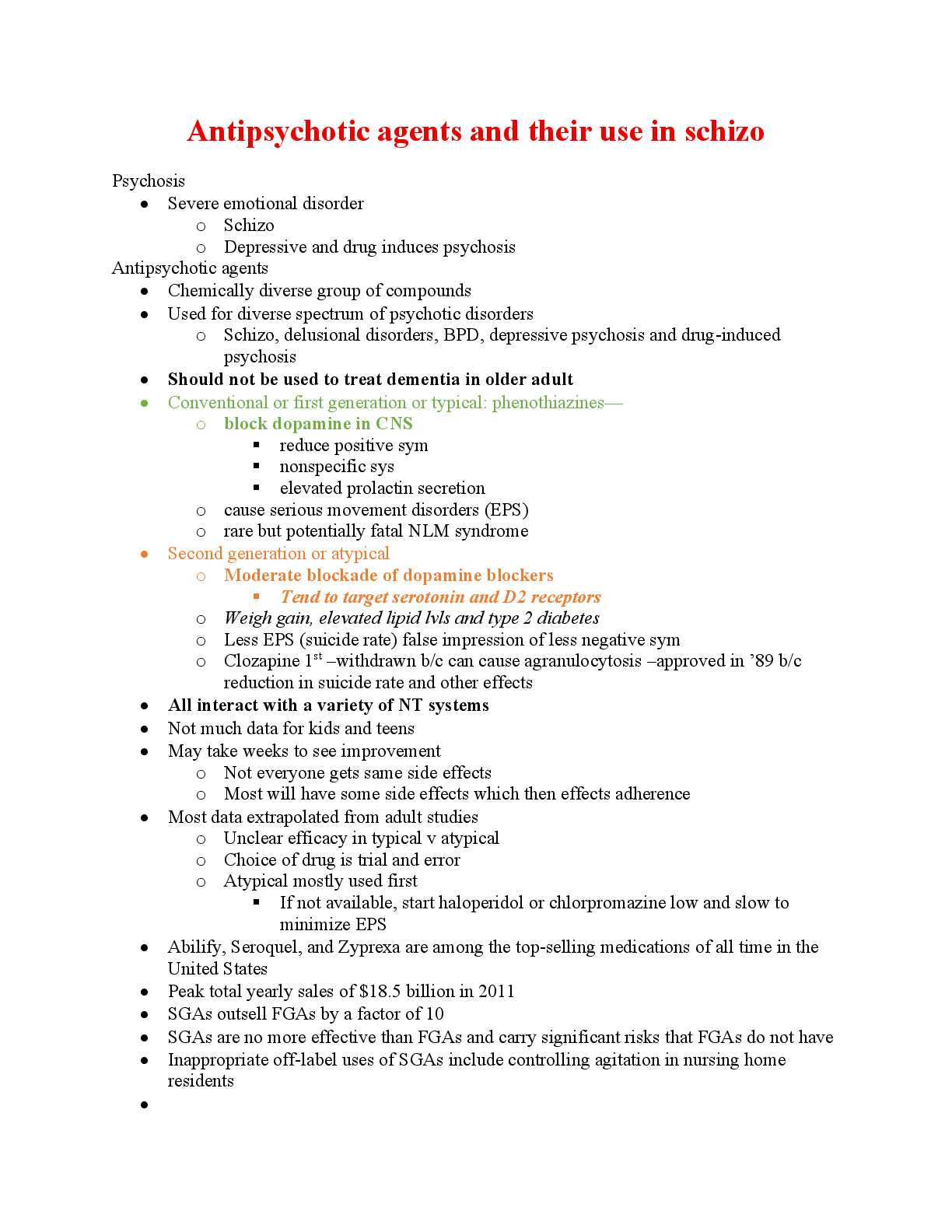


.png)


